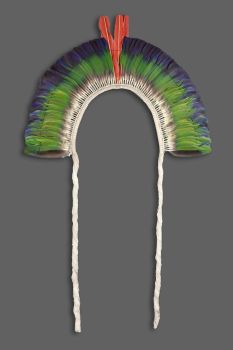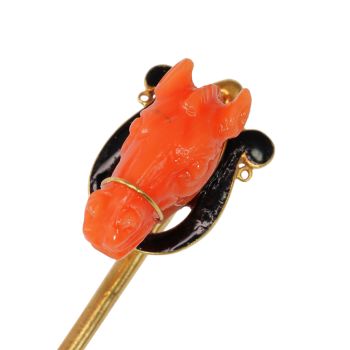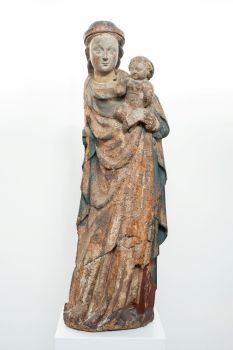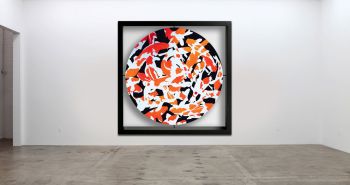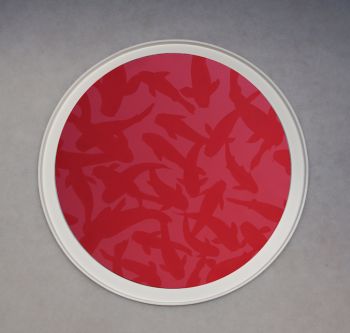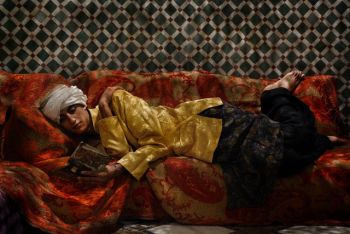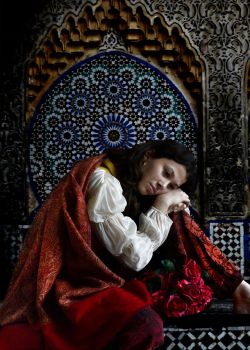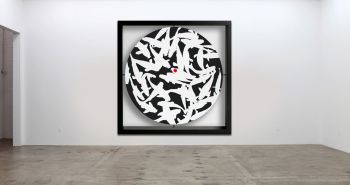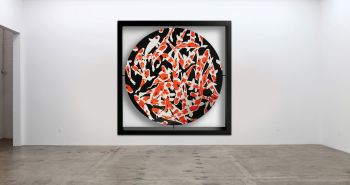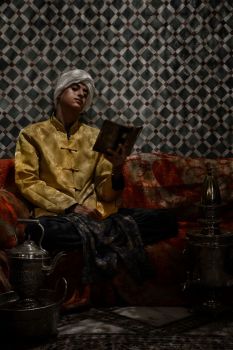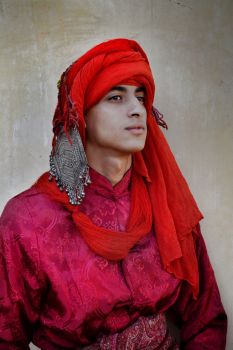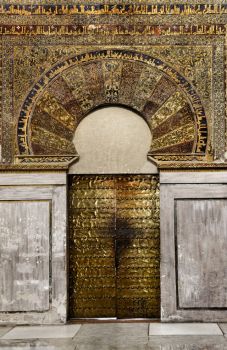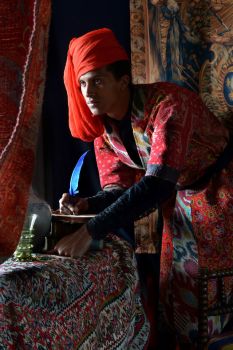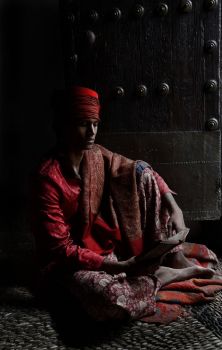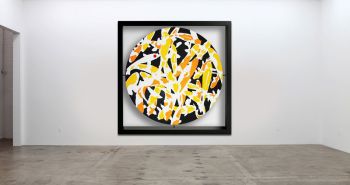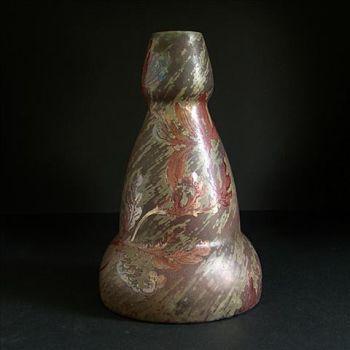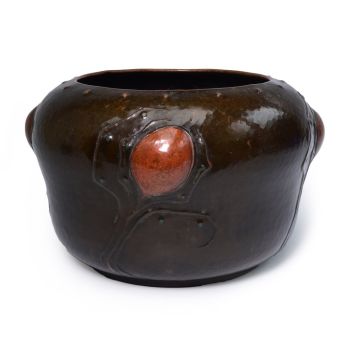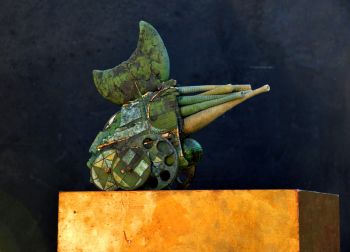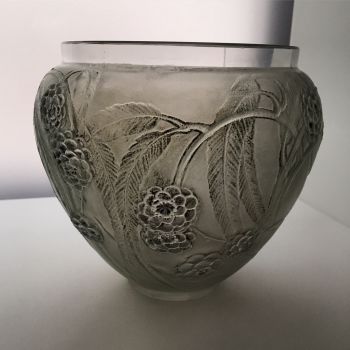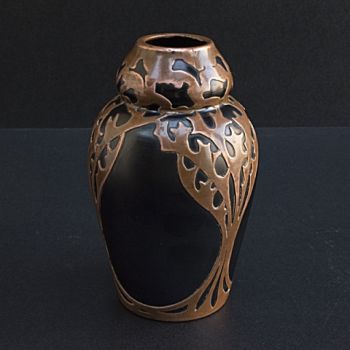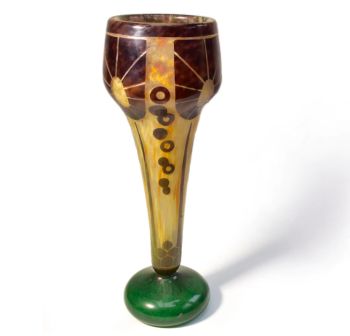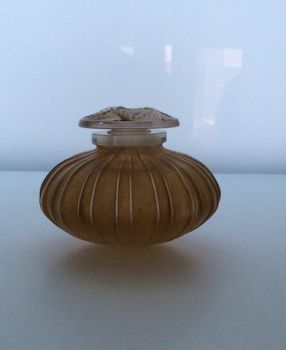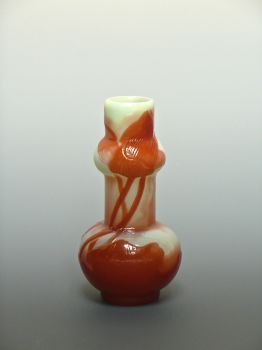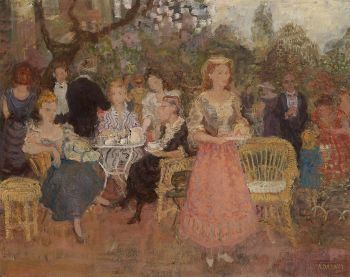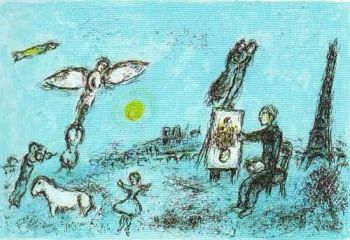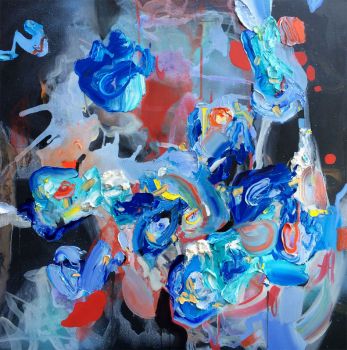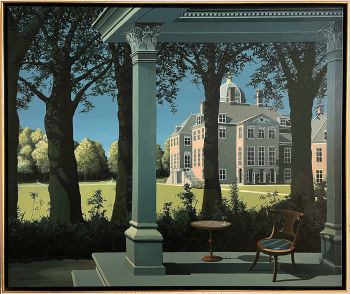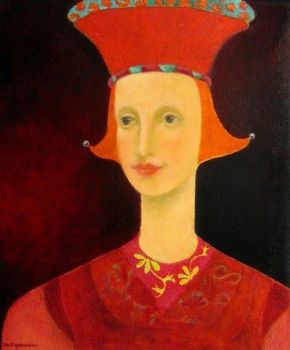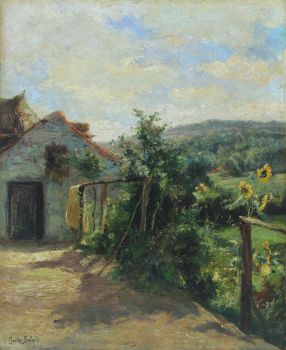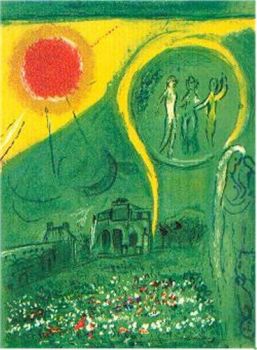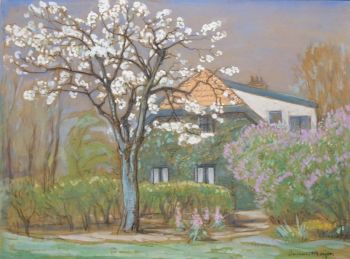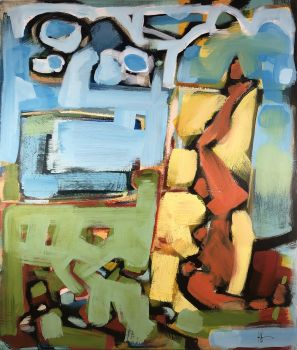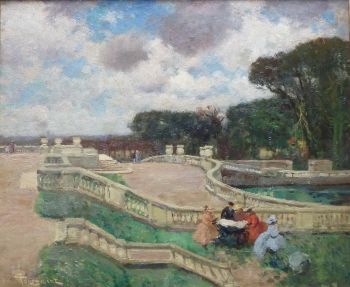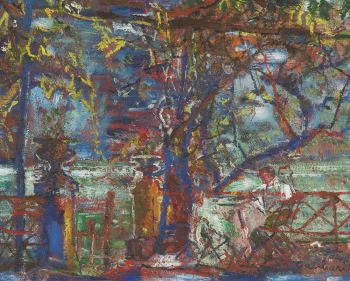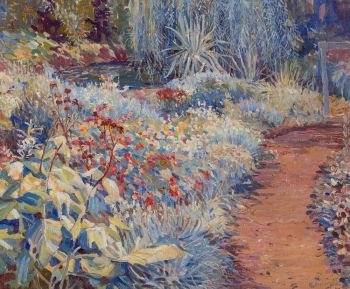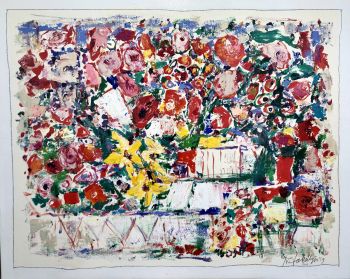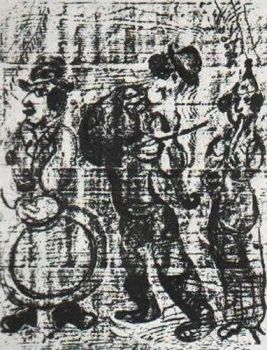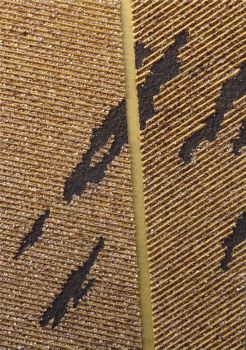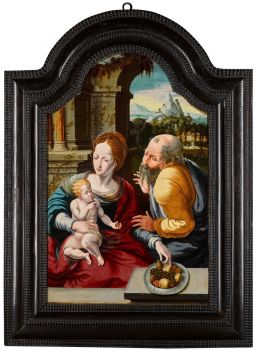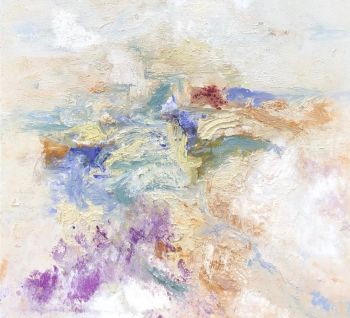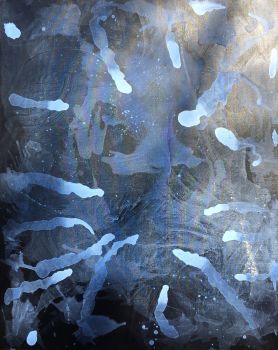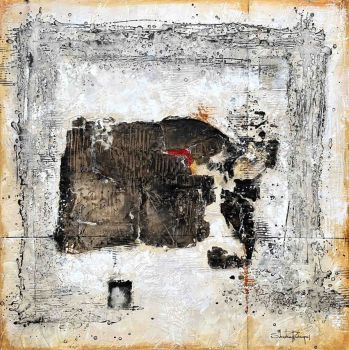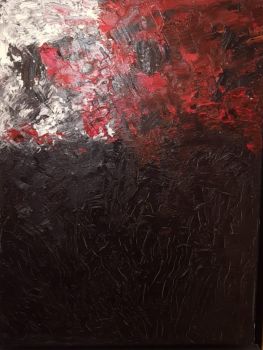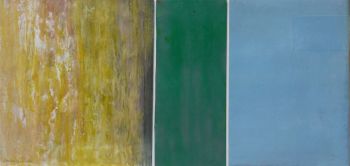Dutch Delft lobbed dish with chinoiserie decoration, 18th century 1670 - 1680
Unknown artist
GlazeCeramicEarthenwarePaint
33 cm
ConditionVery good
€ 875
Verkoulen Oriental & European Antiques
- About the artworkDutch Delft Lobbed dish with in the center oriental figures surrounded by palm trees, 17th century, around 1670-1680, Delft, Holland.
Blue and white
Dimensions: 33 cm. diameter.
With eight framed panels and a rare center decoration this Dutch Delft lobbed dish from the second half of the 17th century is a true beautiful piece. The blue is very vivid and the paintings are done very carefully. In the center there are two figures surrounded by palm or pine trees. The lobbes have flower patterns or oriental figures as well depicted.
In the second half of the 17th century, many Dutch dishes were painted with Chinese motifs, usually consisting of a landscape with Chinese figures. Lobbed dishes were made mostly in 6,8 or 9 lobes or even with much more smaller lobes such as between 25 to 30 parts looking like fluted mouldings. The dishes can have for example double circles, a curved centre or be twisted lobbed derived from silver specimens that is quite rare.
Reference: for a similar dish see
-Museum Boijmans van Beuningen nr. A 3281 (KN&V)
-Koninklijk Fries genootschap object nr. C06318 - About the artist
It might happen that an artist or maker is unknown.
Some works are not to be determined by whom it is made or it is made by (a group of) craftsmen. Examples are statues from the Ancient Time, furniture, mirroirs, or signatures that are not clear or readible but as well some works are not signed at all.
As well you can find the following description:
•“Attributed to ….” In their opinion probably a work by the artist, at least in part
•“Studio of ….” or “Workshop of” In their opinion a work executed in the studio or workshop of the artist, possibly under his supervision
•“Circle of ….” In their opinion a work of the period of the artist showing his influence, closely associated with the artist but not necessarily his pupil
•“Style of ….” or “Follower of ….” In their opinion a work executed in the artist’s style but not necessarily by a pupil; may be contemporary or nearly contemporary
•“Manner of ….” In their opinion a work in the style of the artist but of a later date
•“After ….” In their opinion a copy (of any date) of a work of the artist
•“Signed…”, “Dated….” or “Inscribed” In their opinion the work has been signed/dated/inscribed by the artist. The addition of a question mark indicates an element of doubt
•"With signature ….”, “With date ….”, “With inscription….” or “Bears signature/date/inscription” in their opinion the signature/ date/ inscription has been added by someone other than the artist
Are you interested in buying this artwork?
Artwork details
Related artworks
Unknown artist
A JURUNA TRIBE FEATHER HEADDRESS1900 - 1950
Price on requestZebregs & Röell - Fine Art - Antiques
1 - 4 / 12- 1 - 4 / 23
Unknown artist
A large Japanese Imari porcelain 'VOC Groningen' dish1800 - 1925
Price on requestZebregs & Röell - Fine Art - Antiques
1 - 4 / 24- 1 - 4 / 24
- 1 - 4 / 24
- 1 - 4 / 8







